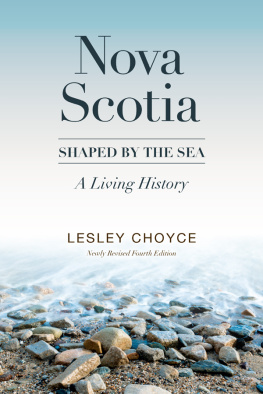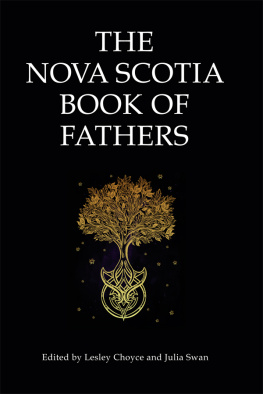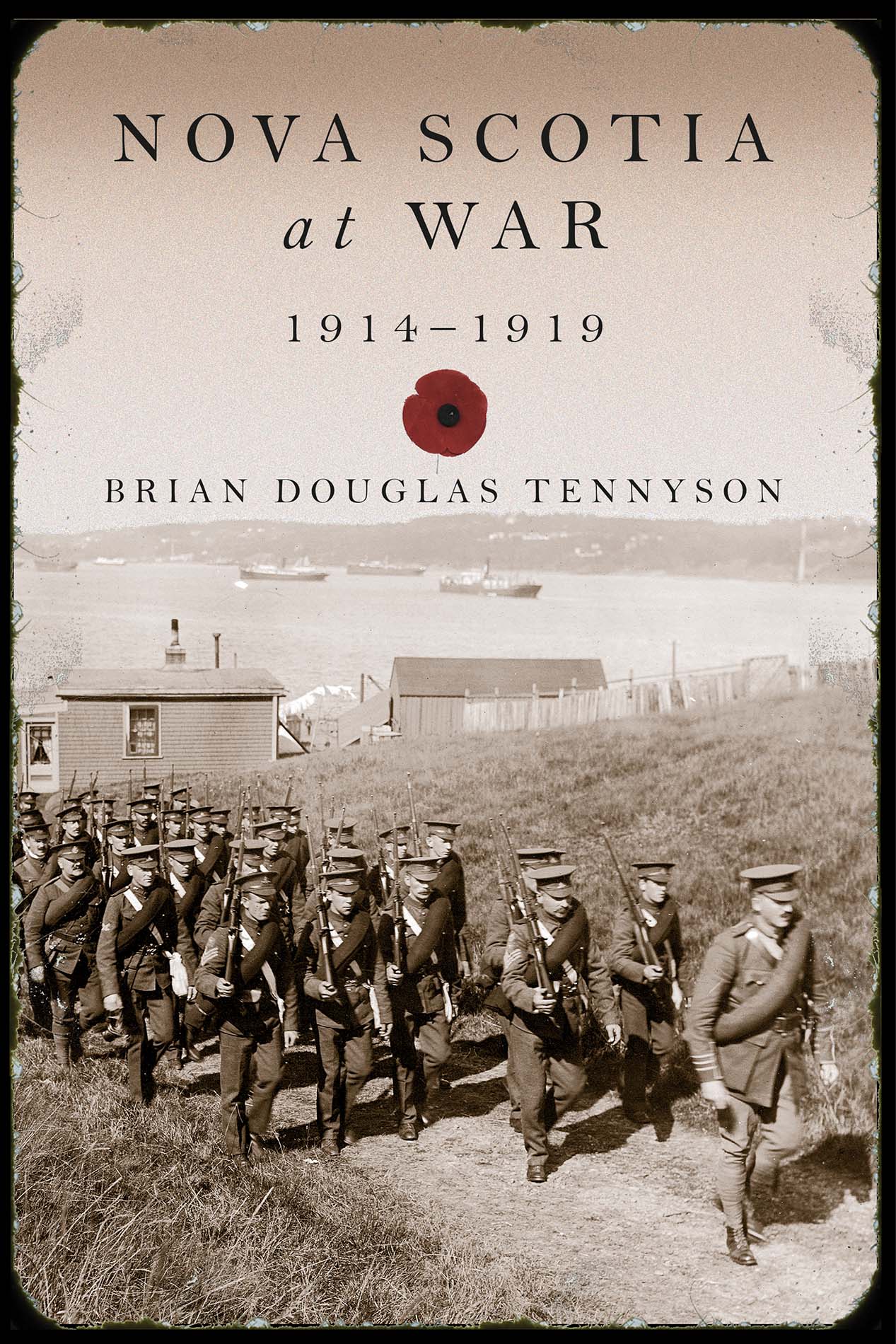Copyright 2017, Brian Douglas Tennyson
All rights reserved. No part of this book may be reproduced, stored in a retrieval system or transmitted in any form or by any means without the prior written permission from the publisher, or, in the case of photocopying or other reprographic copying, permission from Access Copyright, 1 Yonge Street, Suite 1900, Toronto, Ontario M5E 1E5.
Nimbus Publishing Limited
3731 Mackintosh St, Halifax, NS B3K 5A5
(902) 455-4286 nimbus.ca
Cover Image: A detachment of troops from the 1st Regiment (Halifax), Canadian Garrison Artillery, arrives at Fort Charlotte on Georges Island in August 1914 to help defend Halifax Harbour.
Printed and bound in Canada
NB1201
Cover design: Heather Bryan
Interior design: John van der Woude, jvdw Designs
Library and Archives Canada Cataloguing in Publication
Tennyson, B. D., author
Nova Scotia at war, 1914-1919 / Brian Tennyson.
Issued in print and electronic formats.
ISBN 978-1-77108-523-6 (softcover).ISBN 978-1-77108-524-3 (HTML)
1. Nova ScotiaHistory1867-1918. 2. Nova ScotiaSocial conditions1867-1918. 3. World War, 1914-1918Nova Scotia. 4. World War, 1914-1918Social aspectsNova Scotia. 5. CanadaHistory1914-1918. I. Title.
FC2324.T46 2017 971.6'03 C2017-904127-4
C2017-904128-2
Nimbus Publishing acknowledges the financial support for its publishing activities from the Government of Canada, the Canada Council for the Arts, and from the Province of Nova Scotia. We are pleased to work in partnership with the Province of Nova Scotia to develop and promote our creative industries for the benefit of all Nova Scotians.
To Massimo, Zoe, and Breeanna with love from Grandpa
Preface
Many books have been written about Canadas involvement in the First World War. As someone recently asked me, What more is there to say? We know how it ended. That is undeniably true, but it has always seemed to me that the journey is as important as the destination. When the war ended more than four years after it began, Canadians had gone through the most traumatic collective experience in their history. And in a very real sense, the war didnt end in 1918, even if the killing stopped. Its impact on those who went overseas, those who waited at home and prayed for them, and everyone else was profound and haunts us still.
As a Nova Scotian, even if only an adoptive one, I have long been struck by the fact that we dont know very much about our provinces role in the war. Only one book was written on the subject and that was M. Stuart Hunts 1920 compilation entitled Nova Scotias Part in the Great War , and it remains a useful source almost a century later. Joseph Hayes published a history of the 85th Battalion, also in 1920, and Ralph Lewis and Francis MacGregor wrote brief memoirs of their experiences in the 25th Battalion. In 1983 F. B. MacDonald and John J. Gardiner published the 25ths war diary and brief interviews with a few of its surviving veterans in The Twenty-Fifth Battalion Canadian Expeditionary Force: Nova Scotias Famous Regiment in World War One , but it was not until 2013 that Robert Clementss history of the 25th, in which he served with distinction, was published.
The bestand best-knownCanadian memoirist, of course, was Will R. Bird, a Nova Scotian who wrote two books, many magazine articles, and an account of revisiting the trenches many years later. But Bird wrote about the experience of Canadian soldiers generally, based on his personal experience in the 42nd Battalion.
These are all valuable books, but none, with the partial exception of Hunt, tried to tell the story of Nova Scotia: its soldiers and sailors, those who served at home as well as those who went overseas, and the civilians who worked in the fishery, on the farms and in the forests, or in the coal mines and steel mills to keep the country going and able to support the war effort. Nor has anyone written about the sharp political divisions that arose during the war, as much in Nova Scotia as in Quebec and other parts of the country. And finally, no one has writtenat least for the general publicabout how the war affected Nova Scotia, shattering its dreams of becoming the Atlantic gateway and the industrial heartland of Canada.
This book attempts to address this need to some extent. It makes no claim to be the definitive work on the subject because I did not undertake any archival research in the papers of relevant prominent Nova Scotians like Robert Borden, W. S. Fielding, George Murray, Edgar Rhodes, and others. It is based on extensive research in several newspapers and any publications that I could find that touched on the subject. My goal has been to present what I hope will be an interesting and informative introduction to an important but neglected subject. I also hope that this book will inspire other scholars to pursue the subject further.
Many people have assisted me in writing this book. The staff of the Nova Scotia Archives, where I spent a lot of time in the past year, were as always very patient, helpful, and supportive. Similarly, the lovely staff of South Shore Public Libraries obtained a steady flow of books for me through the provincial interlibrary loan system. Local historical societies and museums are invaluable for this kind of project, and it is a pleasure to acknowledge the assistance of Barbara Thompson and Linda Bedford of the DesBrisay Museum in Bridgewater; Linda Rafuse and Kathleen Stitt of the Queens County Museum; Lisette Gaudet of the Yarmouth County Museum and Archives; Lyne Allain of the Mahone Bay Museum; Richard Sanderson of the Naval Museum of Halifax; and Dr. Keith Mercer, Cultural Resource Manager of Parks Canada in Halifax. Pat Townsend and Wendy Robicheau of the Acadia University Archives were very helpful, as was Kathleen MacKenzie of the St. Francis Xavier University Archives. John Brehaut of the Department of Veterans Affairs helped me to sort information from the Virtual War Memorial database. Tim Coulter of Delray Beach, Florida, shared his vast knowledge of the history of North American shipbuilding to clarify a point on the Nova Scotia Steel Companys shipbuilding program. Brigadier General Greg Young of the 15th Battalion cef Memorial Project and William H. E. Day of Port Maitland kindly gave me permission to use photographs in their possession, as did Bruce MacDonald of Antigonish. Sara Beanlands allowed me to use material from her fine report on the Jewish Legion in Windsor. Dr. Philip Smith of McGill University provided interesting information on John Gallishaw and F. B. McCurdy. John Orr and Spud Roscoe also kindly shared information with me. Matthew K. Barrett, who among other things writes fascinating articles online about the Canadian Corpss battalion commanders, helped me to discover that the papers of Sir Robert Borden are now available online for consultation. Finally, I want to express my great appreciation to Whitney Moran, managing editor at Nimbus, for her enthusiasm and support even when this project grew much larger than she had anticipated, my copy editor, Paula Sarson, who was not only thorough but proved to be exceptionally tolerant of a sometimes cranky author, and Elaine McCluskey, non-fiction editor, who very efficiently assisted with the final layout, cover design, and images. They were a delight to work with.
Lindsay Tennyson, Michele and Gemma Coley, Peter and Heather Nowlan, and Jennifer Faulkner and Peter Robichaud all contributed significantly to this project by providing accommodations during my extensive research trips to Halifax and Yarmouth. John Boileau and Bryan Elson were good enough to read draft chapters and make very helpful comments. I, of course, am solely responsible for any factual or interpretive errors that remain. Finally, as always, I want to thank my long-suffering wife, Sandra Atwell-Tennyson, who has shared yet another exploration of the Great War, assisting with research, copy-editing, and general encouragement.






